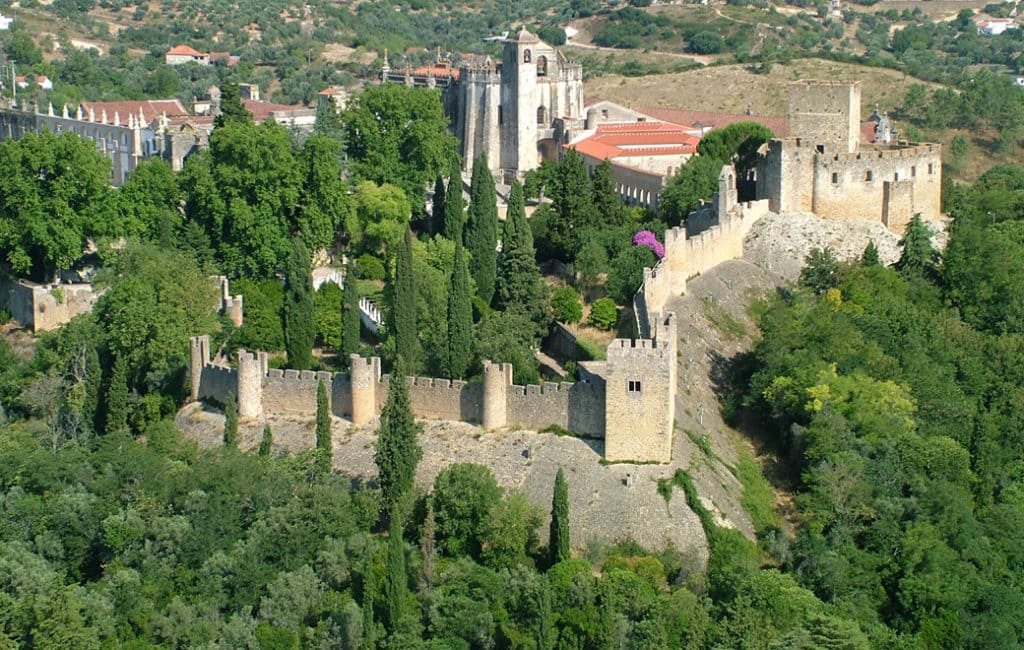Related Place: Tomar

Foundation and Early History
The construction of the castle began in 1160 by order of the first Grand Master of the Portuguese Templars, Gualdim Pais. This was the time of the Reconquista, the centuries-long struggle of the Christian states of the Iberian Peninsula against the Moors. Tomar was a strategically important point for the defense of the newly conquered territories and the protection of Portugal's northern borders.
The architectural style of the castle combines elements of Romanesque and Gothic, and its massive walls and towers were designed for long sieges. The city of Tomar quickly grew around the castle, soon becoming an important religious and military center.
The Templars and the Castle's Heyday
Tomar's main fame is associated with the Knights Templar. After the dissolution of the order in 1312 at the insistence of Pope Clement V and the French King Philip IV the Fair, the Portuguese King Denis managed to preserve the Templars by transforming them into the Order of Christ (Ordem de Cristo). Tomar Castle became the residence of the new order and retained its significance as a stronghold of Christianity on the Iberian Peninsula.
In the 14th-16th centuries, the castle was repeatedly rebuilt and expanded. New defensive lines, towers, and the famous Charola Chapel (Charola) — a round church inspired by the Church of the Holy Sepulchre in Jerusalem — appeared here. During this period, Tomar became not only a military fortress but also a spiritual center.
Significance in the Age of Great Geographical Discoveries
In the 15th century, Tomar and the Order of Christ played a key role in financing and organizing Portuguese maritime expeditions. The Grand Master of the order, Prince Henry the Navigator, made the castle the headquarters for the training of captains and navigators who opened the way to India, Africa, and the New World. The Order of Christ became a symbol of Portuguese expansion — its cross adorned the sails of Vasco da Gama's ships and other famous explorers.
Architectural Features
Tomar Castle is a unique complex that combines elements of a medieval fortress and a monastery. A special place is occupied by the Convent of Christ (Convento de Cristo), included in the UNESCO World Heritage List. In addition to the impressive defensive walls, the ensemble includes monastic cloisters, a magnificent Manueline church decorated with stone carvings, and the famous Manueline window, which has become a symbol of Portuguese Gothic.
Modern State and Significance
Today, the castle and monastery in Tomar are one of Portugal's main tourist attractions. Every year, thousands of travelers and pilgrims come here to touch the history of the Templars, admire the architectural masterpieces, and enjoy the atmosphere of medieval Europe. Tomar Castle is not only a monument of the past but also a living reminder of the glorious pages of Portuguese history.
Interesting Facts and Legends
It is said that the Templar treasures are hidden in the castle's dungeons, and secret underground passages connect it with the city.
The symbolism of the castle and monastery is closely associated with mysticism and alchemy, which is reflected in the architecture and decor.
The Tabuleiros Festival (Festa dos Tabuleiros) is held annually in Tomar — one of the country's most vibrant folk celebrations.